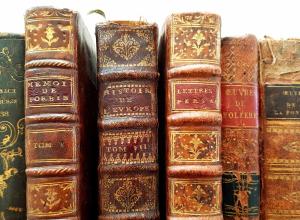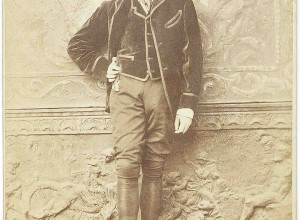Wilkie Collins and Charles Dickens: A Tale of Two Writers

Left: A copy of The Frozen Deep (1866), a play written collaboratively by Charles Dickens and Wilkie Collins, annotated by Collins. Right: A February 6, 1859, letter from Dickens to Collins.
The relationship between English writers Wilkie Collins and Charles Dickens is under the spotlight in a groundbreaking exhibition celebrating the 200th anniversary of Collins’s birth on January 8, 1824.
Organized by the Charles Dickens Museum in London, Mutual Friends: The Adventures of Charles Dickens & Wilkie Collins is on view through February 25. It follows the museum’s 2019 acquisition of several letters from Dickens to Collins from an anonymous American collector.
“It got us thinking about their friendship,” said the exhibition’s curator, Emma Harper. “We talked to researchers from the Wilkie Collins Society, and with the bicentenary approaching, it seemed the perfect time to put on an exhibition about the pair’s friendship and writing. Not many people are aware that Charles and Wilkie wrote so many stories together.”
Collins and Dickens met in 1851 as fellow amateur actors performing in a play by Edward Bulwer-Lytton, a mutual friend. They quickly became good friends who traveled together and enjoyed lighter moments such as competing to grow the best mustache. In 1860, Collins’s brother Charles married Dickens’s daughter Katey.
“In terms of their professional collaboration, certainly at the start, it is one of mentor and protégé,” Harper said. “Charles is twelve years older and already an established writer when he meets Wilkie, [who was] clearly thrilled to be taken under Dickens’s wing. Wilkie wrote the first of his many contributions to Dickens’s journal Household Words in 1852, and by September 1856, Charles had hired him as a permanent staff writer. It was his major break as a writer, but it also made his subordination to Charles official, ‘one of the satellites of Jupiter,’ as a contemporary reviewer put it.”
The exhibition explores their joint body of work, including collaboratively written articles, novellas, and plays such as The Frozen Deep (1856) and a five-part article The Lazy Tour of Two Idle Apprentices (1857), based on a walking tour during which the writers got lost up a mountain and Collins injured his leg when he slid into a river.
“When The Woman in White was serialized in Dickens’s journal All the Year Round, it earned [Collins] the equivalent of £100,000 and also, of course, benefited Charles as the owner,” explained Harper. “There’s an element of the chick flying the nest as Wilkie now perhaps didn’t need Charles’s literary guidance quite as much, and perhaps there was some jealousy as Charles’s A Tale of Two Cities did not do quite as well.”
Rather astonishingly, according to the Dickens Museum, it seems that there’s never been a Wilkie Collins exhibition before.
“Unlike with Dickens and other famous writers like Jane Austen, there’s no remaining literary house dedicated to Wilkie Collins,” Harper said, “so objects and letters relating to Wilkie are scattered. And while there have been dramatizations of Wilkie’s most famous novels, Dickens and Austen really do dominate the costume drama world on television. We’re thrilled to give him the attention he deserves for the first time.”
Collins and Dickens later drifted apart but continued collaborating until 1867, when they released the novel and play No Thoroughfare—a playbill and annotated copy are in the exhibition. They also wrote to each other right up to Dickens’s death in 1870.
“The letters between them are my particular favorites,” Harper said, “as you just get such a sense of their friendship. Charles invites Wilkie to spend his birthday with him in Brighton, or just come out for dinner, [and] urges him to think of where they could next go on holiday—all things that we do with our friends today.”















